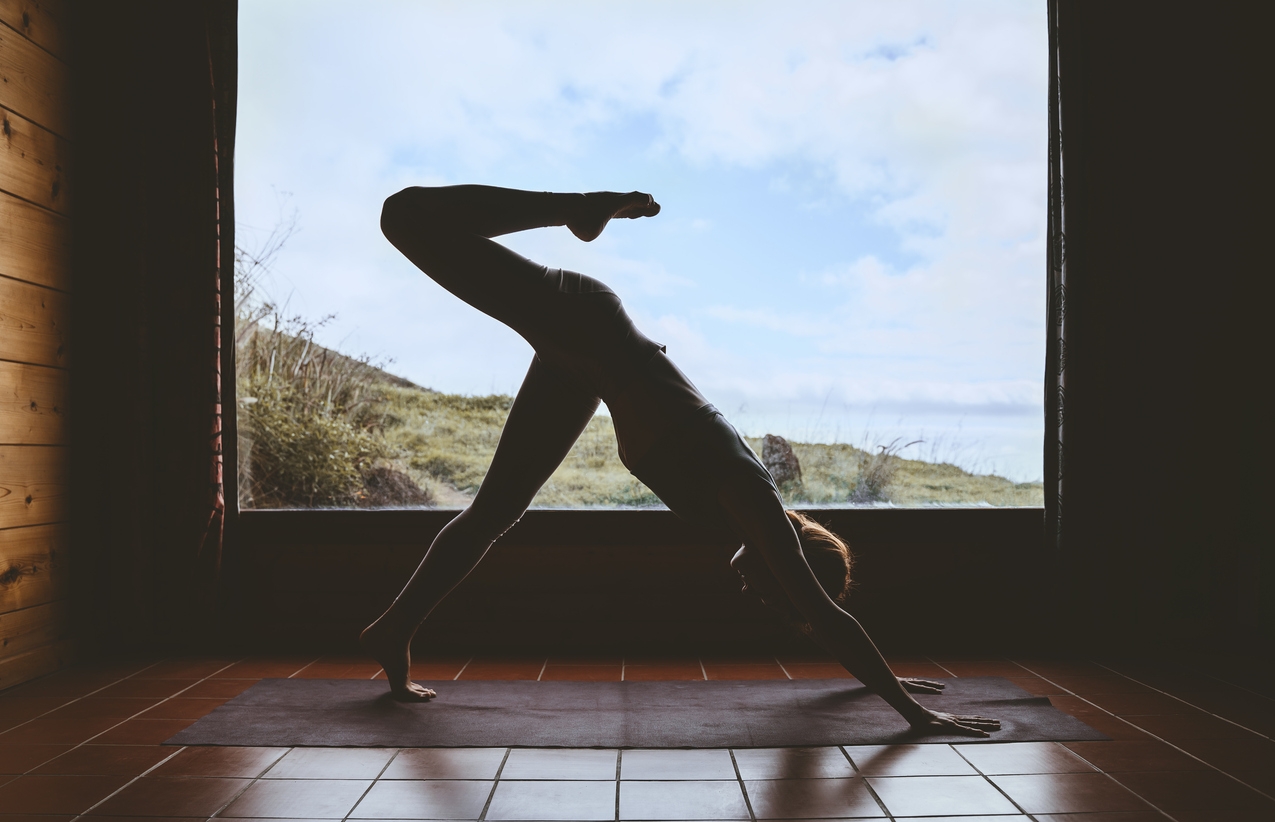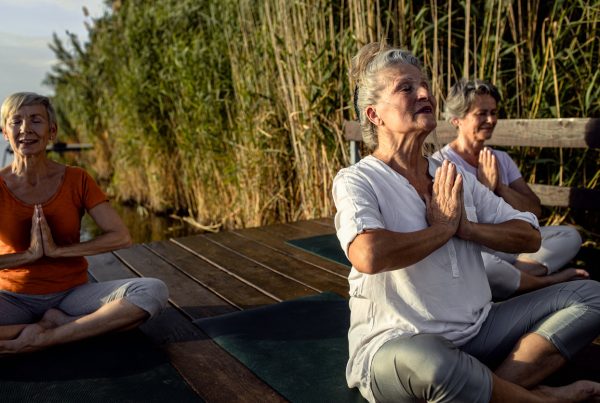Jayne Nicholls, director of Group X Training, describes what yoga flow is and how to achieve it in your classes.
In order to understand flow in yoga, consider the simple word ‘flow’ in any other context. Water flows, thoughts flow, conversation flows and, in all instances, the efficacy of that flow relies upon the content being unhindered without obstacle or stutter. In traditional yoga, Vinyasa is the term used to describe flow, where postures transition from one to the next, creating a sequence. This is particularly typical of Ashtanga Yoga, a modality constructed in six series: primary, intermediate and four advanced containing a set number of postures, all beginning with a sun salutation (Surya Namaskara) variation.
It always makes me smile when I see a class timetabled as Vinyasa Flow! This translates as a flow, flow class and is a great example of modern yoga’s need to conform to its Sanskrit root and then dumb down its inception with English translation.
Knowing what flow is and understanding how to achieve it are all part of the yoga journey. As a dancer, it brings me absolute joy to create flow routines. I find it the perfect stimulus for meditation in movement but also appreciate as a teacher that my joy/obsession can be completely frustrating for the person wobbling through my practice, unless I educate them thoroughly on the process. It reminds me of when we both created and killed step back in the 90s by making it so complex that only the minority could keep up. I often say that, if I had a pound for every person I put off step in those days, I would be long retired now – oh happy days!
Here are my top tips for achieving flow for absolutely everyone in your classes:
- Understand each posture. Many of the yoga greats, including the master Iyengar and Pattabhi Jois (Ashtanga), are cited as teaching students to get the physical postures right and the rest will follow. I comprehend this to mean that we should gain a thorough understanding of where we must be in a posture in order to gauge its results. For example, if we go deep into the posture at the end point of our range of motion, we have no strength when transitioning to the next and strength is crucial to good flow. Observe someone trying to move with ease from a posture that sits in deep flexibility; it is clumsy and often staggered as they struggle to reclaim their bodyweight from an unstable base, moving into an elevated position where they have the stability and strength to progress. Apart from an aesthetic lack of grace, this is also potentially damaging to the tendons and/or ligaments, as the natural muscle hierarchy is not responsible for movement when we rely upon connective tissues to help with the hauling process. In brief, we must be in a posture where the muscles – all muscles: agonist, antagonist and their synergistic counterparts – can work functionally. We must understand that the root of the posture, our foot placement, is crucial to its stability; for example, in Warrior 2 (Virabhadrasana II), the back foot must block the posture in relation to the degree of external rotation in its corresponding femur. Thus, the placement of the back foot will fully expedite the pelvic position in order for both legs to perform their role. The front foot is the absolute basis in creating a directional marker for the flow.
- Apply breath and focus. As the greats suggest, “the rest” are the abundant elements of yoga that facilitate progression and two of the basics are breath work and focus. A mastery of breathing is crucial to yoga flow, as it will prepare us for the next move, initiate each transition, help with its fluidity and facilitate a smooth landing into the next posture. The particular breath protocols that we need for flow are thoracic or power breathing and breath retention. In much the same way that these two important techniques can make the difference between a good and bad power lift, they can make or break our flow. The quality of the breath travelling in and out of our body, the sound of the breath and the timing of the breath are all fundamental to great flow, along with focus (drishti). This can be as simple as looking where you are going at all times, directing your gaze to ensure more stability in movement or working on concentrated intention throughout every millimetre of space covered in the flowing process. One thing simply leads to another.
- Stability and ease. Everything mentioned so far culminates in Sthira, the stability of a posture born out of strength and strong intention. A strong body facilitates a strong mind and, conversely, a determined mind will drive a strong physical posture. In yoga, we are warriors and as such need to be steadfast, brave and determined in our movements. Sthira should always be our goal. In order to flow we are dancers, both lyrical and seductive in our sequence, and for this we need Sukha, the ease of movement that allows us to be blissful, liberated and fluid.
These things are not easy and are not the prerequisites for flow by any means. They are the things we work at during our practice in order to achieve Samhadi, that elevated stance when all elements are in the right place for us to transcend purely movement with focus and breath. It is the synergy of all these things (and more) that allows us to experience a higher state of consciousness.
In my experience of learning yoga, when presented with the eight limbs as a guide for living a more rewarding actualised existence, we can only truly appreciate the sentiment when we experience it. My journey involved teaching flow and progressively seeking a greater understanding of how to improve it for both myself and my clients. At least four limbs of yoga are crucial to this progression. In the short term, our greatest joy should be in wobbling, falling and improving. Yoga will come further down the line.
Want to learn more from Jayne? Jayne will take you on a journey of self-discovery using your breath – check out ‘Breathing 101‘.
Check out our yoga teacher insurance cover









One Comment